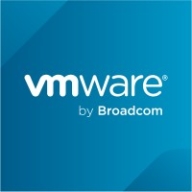

VMware vCenter and HPE Integrated Lights Out (iLO) are competing in IT infrastructure management. VMware vCenter appears to have the upper hand with its comprehensive virtualization management capabilities, while HPE iLO excels in hardware control through remote management features.
Features: VMware vCenter effectively manages diverse virtual environments, offers advanced resource allocation, and provides performance monitoring. HPE iLO provides direct hardware-level management, allows low-level control, and enables remote server access.
Ease of Deployment and Customer Service: VMware vCenter requires a more complex configuration due to its virtualization focus, demanding extensive IT resources for deployment. HPE iLO offers a simpler setup with straightforward integration into existing HPE systems and provides dedicated support for hardware-level issues.
Pricing and ROI: VMware vCenter involves higher setup costs, aligning with its extensive virtualization capabilities, and offers significant ROI by optimizing resource utilization. HPE iLO, with a more affordable entry point, presents compelling ROI for efficient remote server management, focusing on cost-effective solutions for server accessibility.

| Company Size | Count |
|---|---|
| Small Business | 15 |
| Midsize Enterprise | 5 |
| Large Enterprise | 18 |
HPE Integrated Lights Out (iLO) is a tool that enables remote server management, enhancing efficiency in IT operations. Its key functions include monitoring, diagnosing, and managing HPE servers.
HPE Integrated Lights Out provides substantial benefits to IT departments by offering robust remote management tools. With iLO, administrators can efficiently monitor and control HPE servers from a distance, allowing for quick problem detection and resolution. iLO integrates effectively with existing infrastructure, ensuring seamless operations without additional complexities. Offering a comprehensive suite of features, iLO stands out in facilitating timely software updates and ensuring system stability across different environments.
What are the most important features of HPE Integrated Lights Out (iLO)?In industries such as healthcare and finance, HPE Integrated Lights Out is implemented to ensure highly reliable and secure server management. Its remote management capabilities are critical in clinical environments, where maintaining uptime is essential. Financial institutions leverage its robust security features to protect sensitive data, ensuring compliance with industry regulations. iLO's adaptability makes it suitable for integration into diverse IT landscapes, offering a reliable backbone for operations across sectors.
VMware vCenter provides centralized management for virtual machines, offering enhanced resource control, high availability, and data protection. Its integration with NSX and vSAN simplifies infrastructure management, although improvements in pricing, licensing, and technical support are needed.
VMware vCenter streamlines the management of virtual infrastructures, facilitating scalability and elasticity through features like DRS, vMotion, and snapshot capabilities. While users appreciate its centralized control and extensive integration options, complexities in interface and upgrades are seen as challenges. Issues like fragmented licensing, difficult Fault Tolerance management, and high resource demands have been highlighted, alongside the need for enhanced security, monitoring, and seamless cloud integration. vCenter is widely used in data centers for overseeing large virtual environments, integrating cloud services, and providing infrastructure as a service.
What are the main features of VMware vCenter?
What benefits and ROI should users expect?
Industries such as IT, finance, healthcare, and government deploy VMware vCenter to manage their extensive virtual environments. Users rely on its automation and centralized management capabilities to ensure high performance and uptime in data center operations, often leveraging it to integrate with cloud services.
We monitor all Server Monitoring reviews to prevent fraudulent reviews and keep review quality high. We do not post reviews by company employees or direct competitors. We validate each review for authenticity via cross-reference with LinkedIn, and personal follow-up with the reviewer when necessary.